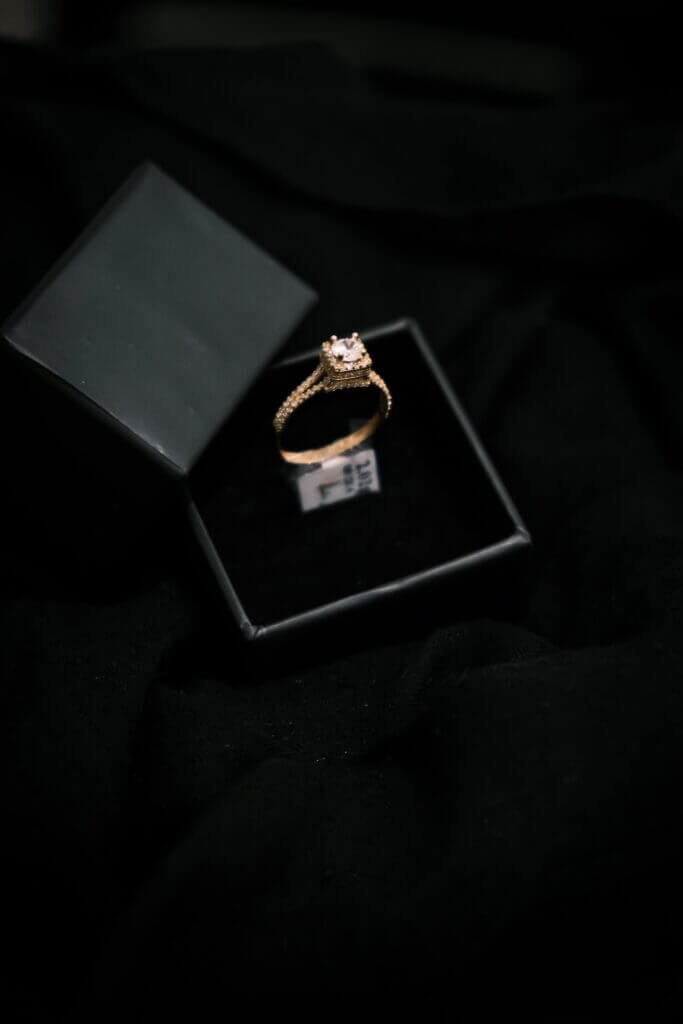Is Artisan Jewelry Real?
Is Artisan Jewelry Real? You’ve stumbled upon the beautiful and intricate world of artisan jewelry, a realm where craftsmanship meets creativity. When discussing conventional jewelry and artisan jewelry, one might question the authenticity of the latter. The legitimacy of artisan jewelry has, undeniably, been a topic of debate amidst the dazzle of the jewelry domain. Let’s embark on an exploration of whether artisan jewelry genuinely carries the weight of authenticity that it claims.

What is Artisan Jewelry?
Artisan jewelry refers to unique, handcrafted pieces of jewelry typically created by individual craftspeople or small-scale businesses. Unlike mass-produced items, artisan jewelry is known for its high quality, attention to detail, and the special stories and traditions it often represents.
Definition of Artisan Jewelry
Artisan jewelry is not just an accessory. It is a form of wearable art that is meticulously designed and crafted by artisans, typically using traditional techniques passed down through generations. The term ‘artisan’ refers to a skilled craftworker who creates functional but decorative items with their hands. Thus, artisan jewelry is the culmination of a harmonious blend of skill, creativity, and culture.
The History and Origins of Artisan Jewelry
Although it’s hard to pin down the exact origins of artisan jewelry, cultures worldwide have been creating handcrafted jewelry for thousands of years. From the ancient Egyptian era to the native American tribes, jewelry has held cultural and spiritual significance. Each community’s techniques, materials, and designs reflect their traditions, making every piece of artisan jewelry a beautiful testament to its origins.
Understanding the Craftsmanship of Artisan Jewelry
Craftsmanship plays a crucial role in artisan jewelry creation, coming to life through the hands and imagination of the maker.
Design and Creation Process
The process of creating artisan jewelry often begins with a design or concept, inspired by the craftsman’s imagination, nature, or cultural motifs. The artisan then crafts these pieces manually or using traditional tools, transforming metal, gemstones, beads, or other materials into intricate designs. Each of these unique pieces reflects the artist’s time, effort, skills, and passion. What Did Artisans Make Jewelry Out Of?
Role of Craftsmanship in Artisan Jewelry
Craftsmanship is the heart and soul of artisan jewelry. It is the craftsman’s proficiency and meticulous eye for detail that determines the quality and uniqueness of each piece. The careful selection of materials, precision in design, and passion for the craft set artisan jewelry apart from mass-produced items.
Skills and Techniques Used
The skills and techniques used in artisan jewelry making vary greatly based on tradition, style, and the artisan’s personal preferences. Skills might include metalwork, beadwork, wire wrapping, stone setting, and enameling, among others. These techniques require a high level of expertise and years of experience to master.

Artisan Jewelry vs Mass Market Jewelry
While both may serve the same purpose of accessorizing or symbolizing personal style, artisan jewelry and mass market jewelry are worlds apart.
Differences in Manufacturing Process
Artisan jewelry is handmade in small batches or as unique one-off pieces, while mass-market jewelry is produced in large quantities using automated machines. This mass production often results in pieces that lack individuality and uniqueness. https://gem-a.com/
Differences in Material Quality
Artisan jewelry makers typically use high-quality materials including precious metals and gemstones, sourced carefully to maintain ethical practices. On the other hand, mass market jewelry often uses cheaper and less-durable materials.
Differences in Design
Artisan jewelry reflects the artist’s creativity, often featuring intricate and one-of-a-kind designs that tell a story. In contrast, mass market jewelry largely follows popular trends and lacks a personal touch.
Materials Used in Artisan Jewelry
Material choice plays a crucial role in the creation of artisan jewelry.
Commonly Used Materials
Artisans use a variety of materials, from precious metals like gold, silver, and platinum to gemstones like diamonds, rubies, and emeralds. They also use less conventional materials such as glass, wood, leather, and recycled materials.
Importance of Quality Materials
The use of quality materials ensures durability and longevity of the jewelry pieces. Moreover, the choice of material can significantly influence the look, feel, and value of the piece.
How Materials Influence the Value
Aside from design and craftsmanship, the value of artisan jewelry is significantly influenced by the materials used. High-quality, ethically sourced materials often cost more, contributing to the final value of the jewelry.

How to Identify Genuine Artisan Jewelry
Just as with any market, the artisan jewelry market also has its share of frauds and replicas. Thus, it’s crucial to understand how to identify genuine pieces.
Important Markers to Look For
Look for signs of handcraftsmanship like slight inconsistencies in the design, as well as the signature or hallmark of the artisan. Genuine artisan jewelry should also come with detailed information about the materials used.
How to Avoid Frauds and Replicas
Ensure you’re buying from a reputable seller, ideally directly from the artisan or a trusted retailer. Ask questions about the piece, its origin, and the artisan. Research beforehand to understand the typical characteristics of the style of jewelry you’re interested in.
Role of Certification and Hallmarking
Certification can assure the validity of the materials used, and that appropriate ethical standards are upheld in their sourcing. Hallmarking, or an artisan’s unique signature, ensures that the piece is a genuine creation of that particular artisan.
The Value and Cost of Artisan Jewelry
The value of an artisan jewelry piece extends beyond its price tag. It incorporates value elements like craftsmanship, quality, design, and cultural significance.
Factors Determining the Value
The value of an artisan jewelry piece is determined by various factors including the quality of materials, the complexity of the design, the time and skill invested in the piece, and the reputation of the artisan.
Why is Artisan Jewelry Generally Costlier
Given the high-quality materials, time-intensive production process, and the unique skills required, artisan jewelry can be more expensive than mass-produced pieces. Despite the higher cost, many discerning customers consider the price a fair exchange for the personal touch, exclusivity, and ethical production.
Understanding if the Premium is Worth
Is it worth paying more for artisan jewelry? That often comes down to personal values. If you appreciate unique designs, high-quality, ethical sourcing, and supporting skilled craftspeople, then the premium price of artisan jewelry is often well justified.

Impact of Artisan Jewelry on Local Communities
Artisan jewelry creation can make a significant difference to local communities.
Economic Impact
Artisan jewelry production can create local jobs, thereby boosting the local economy. It also provides artisans with a dignified and sustainable way of making a living.
Socio-cultural Influence
Artisans often imbue their pieces with cultural motifs and traditional designs, which helps sustain and promote local cultures. Artisan jewelry also helps in maintaining traditional craftsmanship alive for future generations.
Role in Preservation of Local Craftsmanship
By producing and consuming artisan jewelry, we support the preservation of traditional techniques and skills that might otherwise fade away in the face of industrialization and mass production.
Prominent Artisan Jewelry Styles Globally
Every region has its distinctive artisan jewelry styles, influenced by local cultures and traditions.
Regional Styles and Motifs
From the silver filigree jewelry of India, to the vibrant beadwork of African tribes, or the turquoise pieces of Native American artisans, regional styles reflect the environment, history, and customs of the communities that craft them.
Contribution of Specific Communities
Particular communities have made significant contributions to the artisan jewelry industry, preserving their traditional techniques while continuously refining their craft. Their distinct styles often become representative of their communities.
Influence on Mainstream Jewelry Trends
The unique designs found in artisan jewelry often inspire mainstream brands. However, the authenticity and the detailed craftsmanship found in genuine artisan pieces are hard to replicate.

Taking Care of Artisan Jewelry
Artisan jewelry can last a lifetime if cared for correctly.
Maintenance Tips
Regular cleaning, avoiding harsh chemicals, and properly storing your jewelry can help maintain its shine and strength. It’s also good to remember that some materials may be more delicate and require extra care.
Common Wear and Tear Issues
Common issues might include scratches on metals, loose gemstones, or broken clasps. Ensure you monitor your pieces for any signs of such wear and tear.
Understanding Repair and Restoration Options
In case of damage, find a professional who understands the intricacy of artisan jewelry for repairs. The original artisan or shop is often the best choice for restoring the piece to its former glory.
Sustainable and Ethical Aspects of Artisan Jewelry
Artisan jewelry goes hand in hand with sustainable and ethical production.
Artisan Jewelry and Sustainability
Artisan jewelry often uses locally sourced or recycled material and encourages sustainable practices in every step of production, from raw material extraction, to packaging and transport.
Ethical Considerations in Production
Artisans are usually paid fair wages for their work, unlike workers in large scale factories. Therefore, a piece of artisan jewelry supports not just the artisan but a chain of sustainable and ethical practices.
Understanding Fair Trade Practices in Artisan Jewelry
Fair trade principles apply to artisan jewelry, which ensures just compensation for artisans and encourages methods of production that respect the environment. When buying artisan pieces, don’t shy away from asking about fair trade practices to ensure your support is making the right impact.
In conclusion, artisan jewelry enriches us with its beauty, value, and the stories it holds. It is a testament to the human potential for creativity, skill, and expression. When you choose artisan jewelry, you celebrate this narrative and play a crucial role in preserving invaluable crafts and cultures.



